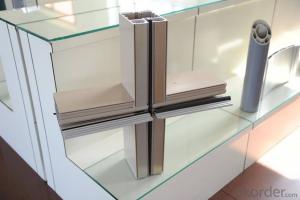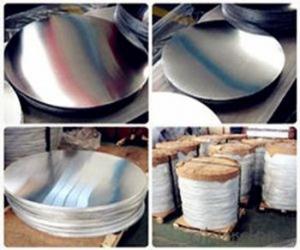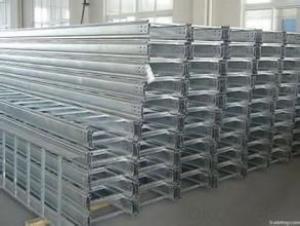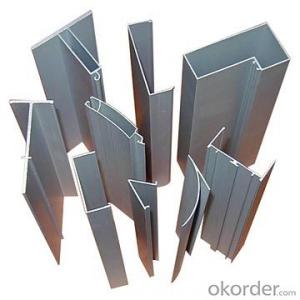Aluminum H Extrusion Profiles for Industrial Sections
- Loading Port:
- China Main Port
- Payment Terms:
- TT OR LC
- Min Order Qty:
- -
- Supply Capability:
- -
OKorder Service Pledge
OKorder Financial Service
You Might Also Like
Industrial aluminium profile
1)Material : 6063 6061 6060 and different aluminium alloy
2)Status:T4 T5 T6 or other special status
3)Surface treatment: mill finish, anodized sliver ,anodized bronze, anodized champagne, anodized black pearl, various power coating color, electrostatic sliver, electrostatic champagne, electrostatic golden, electrostatic titanium , machine polish sliver, machine polish bronze, wooden grain color, and Fluorocarbon spraying.
4)Annual capacity : 120000TON
5)Quality : China Nation Standard GB/T 5237 2008 (advanced class)
6)Use: can be widely using aluminium window, door, curtain wall, hand railing , normal aluminium profile, decorative and industrial aluminium profile
7)Advantage: Famous Brand reasonable&market price, soonest delivery and good after sale- service
8)Type of package:protection foam+heat contracted plastic film. / wooden packing / Metal pallet or depand on clientspecial requirement.
9)Payment term:T/T:30% of total value as deposite should paid by T/T within 3 days when confirmation ,and the remaining sum should be paid by T/T before delivery.L/C: 100% at sight
10)Delivery Day: 15-30days
11)Honor : CHINA FAMOUS TRADEMARK, CHINA TOP BRAND, ISO9001-2000, CHINA SQUARE&ROUND COMMITTEE DNV
- Q: Are aluminum profiles suitable for use in pharmaceutical manufacturing?
- Yes, aluminum profiles are suitable for use in pharmaceutical manufacturing. They are lightweight, corrosion-resistant, and easily sanitized, making them ideal for maintaining high levels of cleanliness and meeting the stringent requirements of pharmaceutical manufacturing processes. Additionally, aluminum profiles offer excellent strength and durability, ensuring the safety and reliability of pharmaceutical equipment.
- Q: Can aluminum profiles be used in the production of agricultural structures?
- Aluminum profiles have the capability to be utilized in the manufacturing of agricultural structures. Aluminum, as a material, is known for its versatility and lightweight nature, providing exceptional strength and durability. It possesses resistance against corrosion, making it suitable for agricultural environments where exposure to moisture and chemicals is common. Agricultural structures such as greenhouses, barns, storage facilities, and animal housing can be constructed using aluminum profiles. The profiles are easily assembled and can be tailored to meet specific design requirements, allowing for flexibility in the construction process. In addition, aluminum profiles require minimal maintenance over time, making them low maintenance. They are also environmentally friendly due to the high recyclability of aluminum, which reduces the long-term environmental impact of agricultural structures. In summary, aluminum profiles offer a multitude of advantages for the production of agricultural structures, including strength, durability, resistance to corrosion, ease of assembly, customization options, low maintenance, and sustainability.
- Q: Are aluminum profiles suitable for bathroom fittings and accessories?
- Yes, aluminum profiles are suitable for bathroom fittings and accessories. Aluminum is a versatile material that is corrosion-resistant, lightweight, and durable, making it an ideal choice for bathroom fittings. Aluminum profiles can be used for various bathroom accessories such as towel racks, shower curtain rods, soap dispensers, and shelves. Additionally, aluminum can be easily shaped and molded into different designs and finishes, allowing for customization and aesthetic appeal. Its resistance to moisture and humidity also makes it a suitable choice for bathroom environments. Overall, aluminum profiles provide a practical and stylish solution for bathroom fittings and accessories.
- Q: Can aluminum profiles be used for display cases or cabinets?
- Yes, aluminum profiles can definitely be used for display cases or cabinets. Aluminum profiles are lightweight, durable, and have a sleek, modern appearance which makes them a popular choice for displaying products or storing items in cabinets. They can be easily customized and come in various sizes and shapes to meet specific design requirements. Additionally, aluminum profiles are corrosion-resistant, making them suitable for both indoor and outdoor applications. They also offer excellent thermal conductivity, which can be beneficial for controlling temperature in display cases or cabinets. Overall, aluminum profiles provide a versatile and attractive solution for creating display cases or cabinets.
- Q: How do you prevent galvanic corrosion when combining aluminum profiles with other metals?
- To prevent galvanic corrosion when combining aluminum profiles with other metals, there are a few effective measures that can be taken: 1. Use compatible metals: Select metals that are close in the galvanic series to minimize the potential difference between them. This reduces the likelihood of galvanic corrosion occurring. For example, using stainless steel or titanium with aluminum can be a good choice. 2. Insulate the metals: Use insulating materials, such as non-conductive coatings, paints, or tapes, to create a barrier between the aluminum and other metals. This prevents direct contact and inhibits galvanic corrosion. 3. Apply protective coatings: Apply protective coatings such as anodizing or powder coating to the aluminum surface. These coatings act as a protective layer, preventing direct contact between the aluminum and other metals, thus reducing the risk of galvanic corrosion. 4. Use isolating washers or gaskets: When fastening aluminum profiles to other metals, use isolating washers or gaskets made of non-conductive materials like rubber or plastic. These washers or gaskets create a barrier between the metals, preventing galvanic corrosion. 5. Design considerations: Design the structure in such a way that any potential for water or moisture accumulation between dissimilar metals is minimized. Proper drainage and ventilation can help reduce the chances of galvanic corrosion. 6. Regular maintenance and inspections: Conduct regular inspections to identify any signs of galvanic corrosion early on. If corrosion is detected, take appropriate action to rectify the situation, such as replacing damaged components or applying protective coatings. By following these preventive measures, the risk of galvanic corrosion can be significantly reduced, ensuring the longevity and performance of the combined aluminum profiles and other metals.
- Q: Can aluminum profiles be used in construction?
- Indeed, construction can benefit from the utilization of aluminum profiles. This material boasts properties such as being lightweight, durable, and resistant to corrosion, thereby rendering it suitable for a multitude of construction purposes. Common applications encompass the construction of windows, doors, curtain walls, and roofing systems. Notably, the versatility of aluminum profiles permits the realization of intricate designs and structures. Furthermore, it is crucial to acknowledge that aluminum is an eco-conscious option for construction endeavors due to its high recyclability.
- Q: Are aluminum profiles suitable for use in the telecommunications industry?
- Yes, aluminum profiles are suitable for use in the telecommunications industry. Aluminum is a lightweight and durable material that offers several advantages in this industry. Firstly, aluminum profiles are corrosion-resistant, making them ideal for outdoor installations such as telecommunication towers and antennas that are exposed to harsh weather conditions. This corrosion resistance ensures the longevity and reliability of the equipment. Secondly, aluminum profiles have excellent thermal conductivity properties, allowing them to dissipate heat efficiently. This is particularly important in the telecommunications industry, where heat generated by electronic components can be detrimental to their performance. By using aluminum profiles, cooling systems can be optimized, ensuring the proper functioning of the equipment. Moreover, aluminum profiles are highly versatile and can be easily customized and fabricated to meet specific requirements. This enables telecommunications companies to design and construct structures, enclosures, and mounting solutions that are tailored to their needs. Aluminum profiles can be easily assembled, disassembled, or modified as necessary, offering flexibility in installation and maintenance. Additionally, aluminum profiles provide electromagnetic shielding properties, which is crucial in minimizing interference between different communication systems. This shielding helps maintain the quality and reliability of the transmitted signals. Furthermore, aluminum is a sustainable material, as it is 100% recyclable and has a low carbon footprint compared to other metals. This makes it an environmentally friendly choice for the telecommunications industry, aligning with the increasing focus on sustainability and reducing environmental impact. In conclusion, aluminum profiles are highly suitable for use in the telecommunications industry due to their corrosion resistance, thermal conductivity, versatility, electromagnetic shielding properties, and sustainability. These qualities make aluminum profiles a reliable and efficient choice for various applications in telecommunications infrastructure.
- Q: Where can I get it, or Jiaozhou, Jiaonan, where there are aluminium profiles? You'd better leave me a call... And do you have any training places for Thai engraving software?.
- What is the most portable electric bicycle brand, type, price, what store sale?It is produced in Beijing, Beijing Shenzhou giant new energy technology Co., Ltd., the factory mainly produces power type lithium batteries, with one of the smallest skillful bicycles, super lightweight, aluminum alloy body,The price is 3000 yuan, and the battery part is 1500 yuan. The battery is in the middle of the bicycle cross bar, and it is inside the cross bar. You can run 15 kilometers at a time, about 10 amperes per hour, and 24 volts. The front wheel drive motor mounted on the front fork, the front wheel of the plastic rim with inner teeth, and the gear motor.Shenzhen ZOOM Ruimu, Shenzhen Xinlong Health Industry Development Co. Ltd (Shenzhen City, Baoan District Longhua Street Longfa Road No. 11, shop: Shenzhen Nanshan District City Nanhai Road Oncidium Road No. 35, 0755-83131635 83131272) but also the production of small electric bicycle is similar to that of the aluminum alloy body, lithium batteries of the same size, the difference is the rear wheel hub motor, 2880 yuan / vehicles, he said after charging can run 40 kilometers, I feel is that big. Design, scooters and electric vehicles structure, technology and engineering, the difficulty of safety is different, can not be confused together, here is their distinction;
- Q: Are aluminum profiles suitable for use in the marine industry?
- Aluminum profiles are indeed appropriate for utilization within the marine industry due to a multitude of reasons. Firstly, aluminum possesses numerous qualities that render it an exceptional material for marine applications. Primarily, aluminum exhibits a lightweight yet robust nature, which proves vital in the construction of boats and other marine vessels. Its lightweight composition enables enhanced speeds and superior fuel efficiency. Furthermore, aluminum showcases an impressive resistance to corrosion, thus making it an ideal candidate for enduring the harsh and corrosive marine environment. This particular attribute obviates the necessity for frequent maintenance and augments the lifespan of marine structures. Moreover, aluminum boasts exceptional thermal conductivity, facilitating prompt heat dissipation and diminishing the risk of overheating in marine engines. Lastly, aluminum is highly malleable and can be effortlessly molded into diverse shapes and profiles, granting versatility in both design and construction. In conclusion, employing aluminum profiles within the marine industry guarantees a combination of strength, durability, corrosion resistance, and lightweight properties, thereby establishing it as a suitable choice for marine applications.
- Q: How do aluminum profiles compare to other materials used for construction and manufacturing?
- Aluminum profiles have several advantages over other materials commonly used in construction and manufacturing. Firstly, aluminum is lightweight, making it easier to handle and transport, which can result in cost savings during construction or manufacturing processes. Additionally, aluminum profiles are highly corrosion-resistant, making them ideal for outdoor applications or environments with high moisture content. This durability also means that aluminum profiles have a longer lifespan compared to materials like wood or steel, reducing the need for frequent replacements and maintenance. Aluminum profiles are also highly versatile in terms of design and customization. They can be easily shaped and molded into various forms and sizes, allowing for greater flexibility in architectural or manufacturing designs. Moreover, aluminum profiles can be easily joined together using various methods like welding or mechanical fastening, enabling efficient assembly and construction processes. In terms of sustainability, aluminum is a highly recyclable material, and aluminum profiles can be easily recycled without losing their quality or strength. This makes them an environmentally-friendly option, as they contribute to reducing waste and energy consumption. However, it is important to note that aluminum profiles may have some limitations compared to other materials. For example, aluminum is not as strong as steel, which may restrict its use in applications requiring high structural integrity. Additionally, the initial cost of aluminum profiles may be higher than other materials, such as wood or plastic. Nevertheless, when considering the long-term benefits and advantages, aluminum profiles often prove to be a favorable choice for construction and manufacturing projects.
Send your message to us
Aluminum H Extrusion Profiles for Industrial Sections
- Loading Port:
- China Main Port
- Payment Terms:
- TT OR LC
- Min Order Qty:
- -
- Supply Capability:
- -
OKorder Service Pledge
OKorder Financial Service
Similar products
Hot products
Hot Searches
Related keywords
























